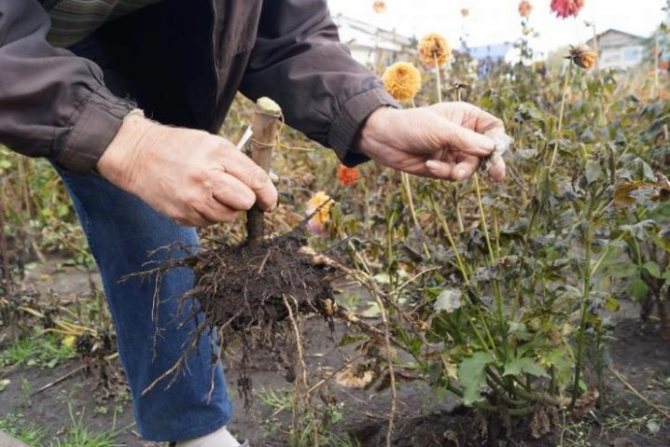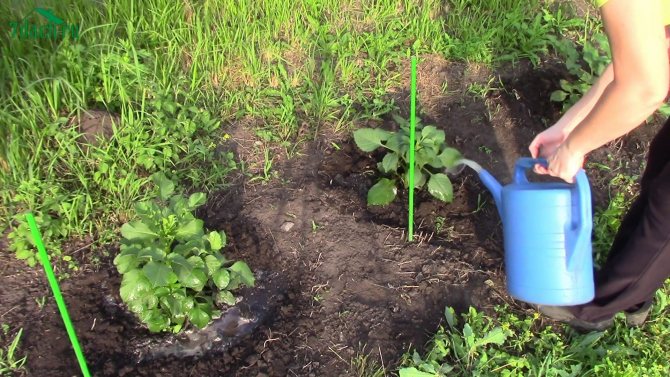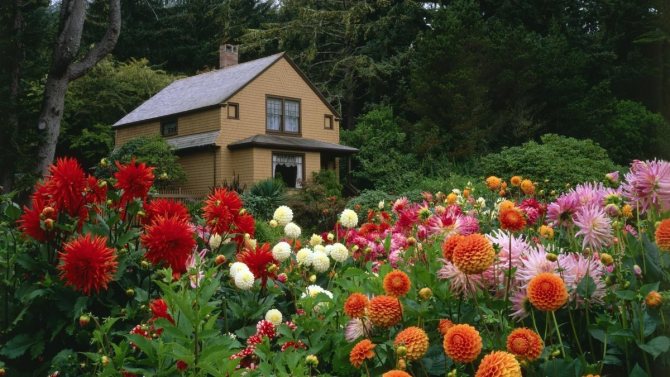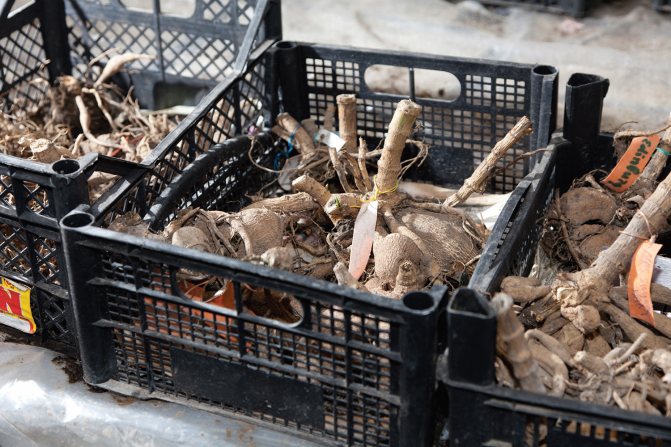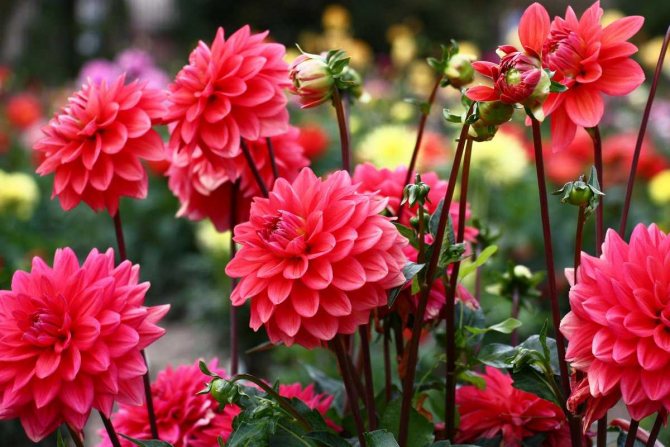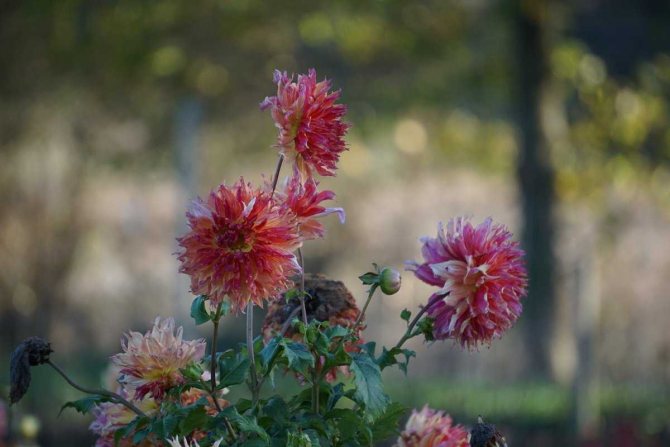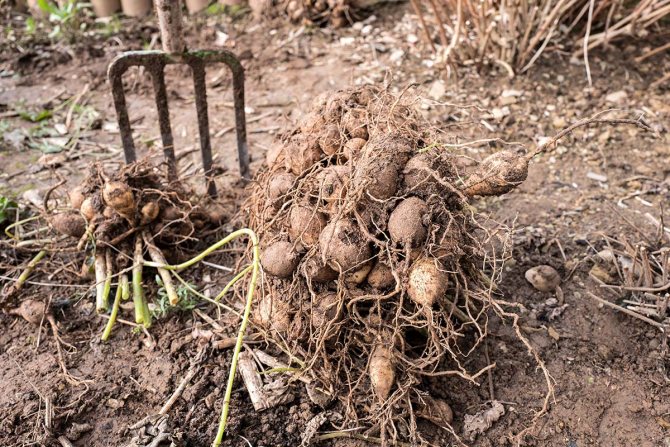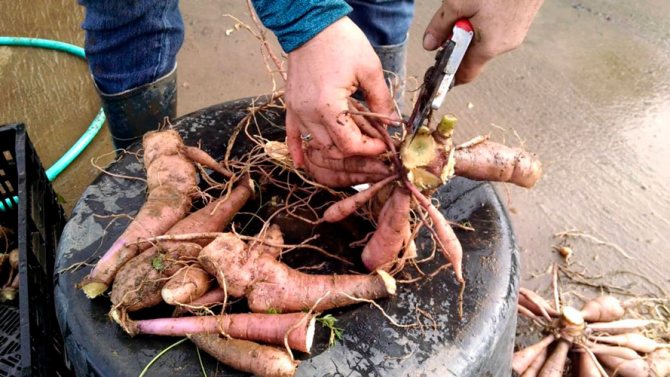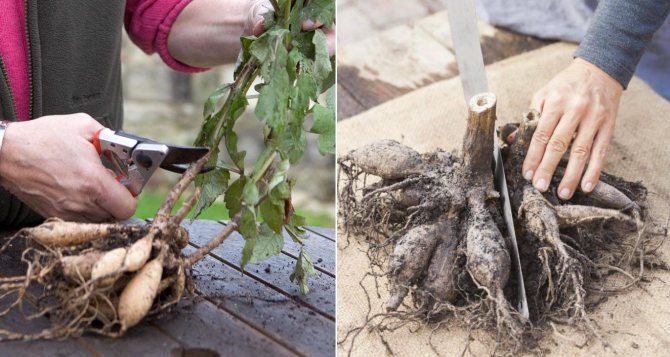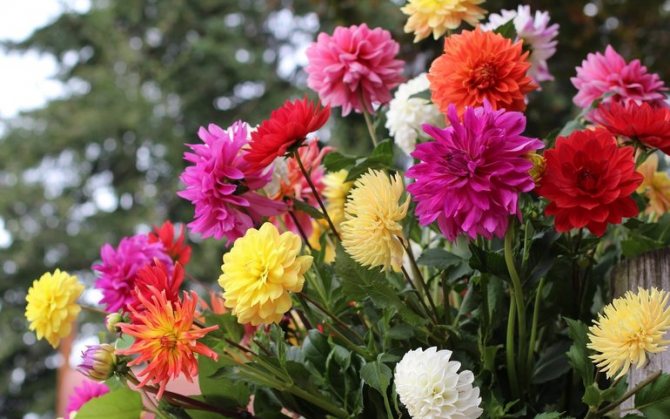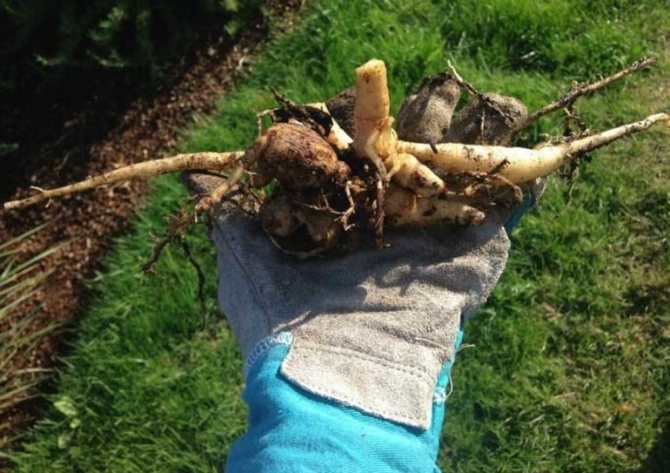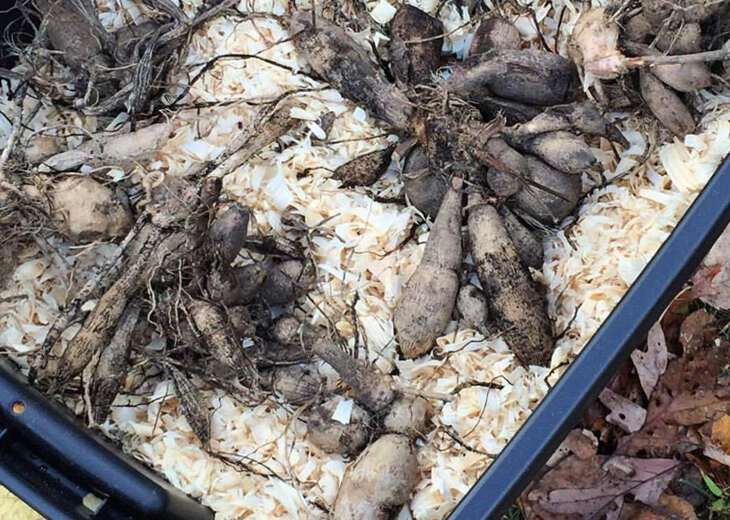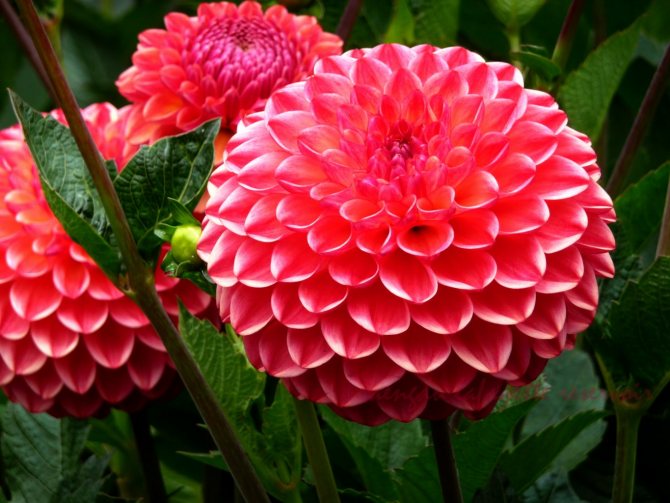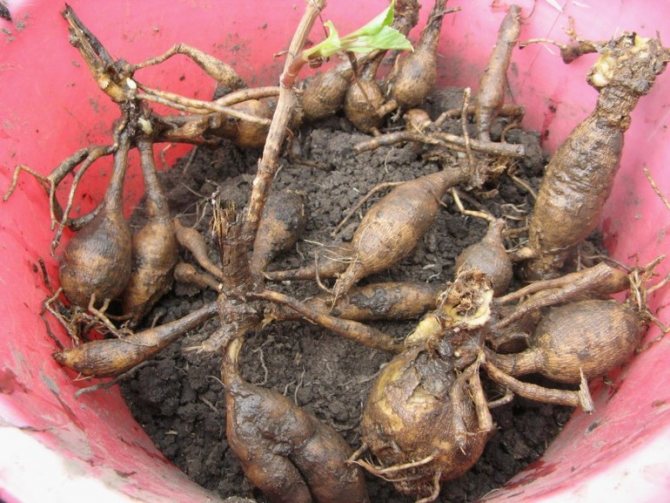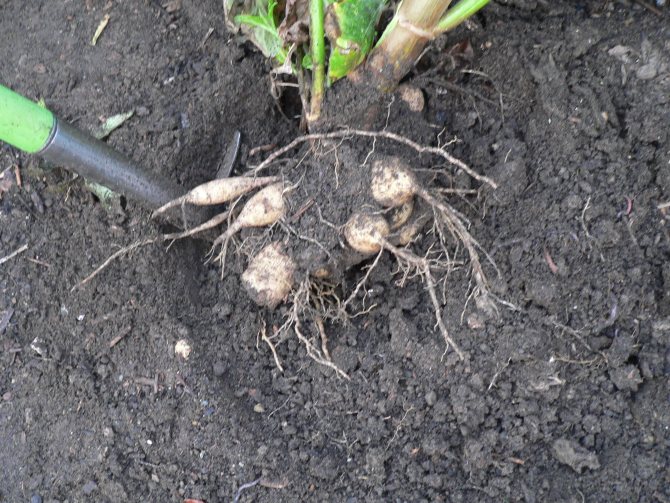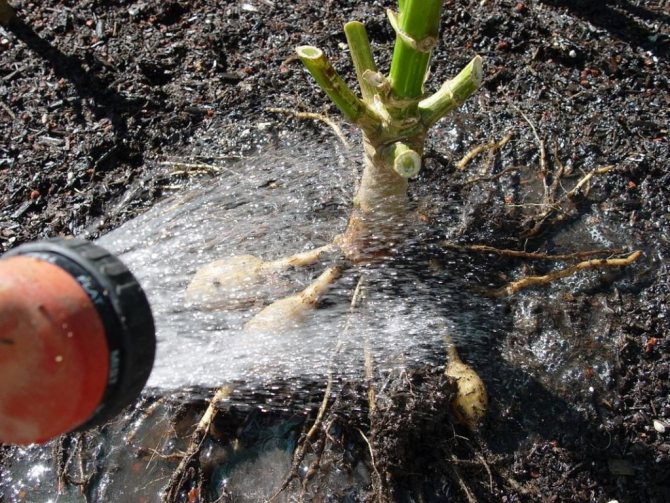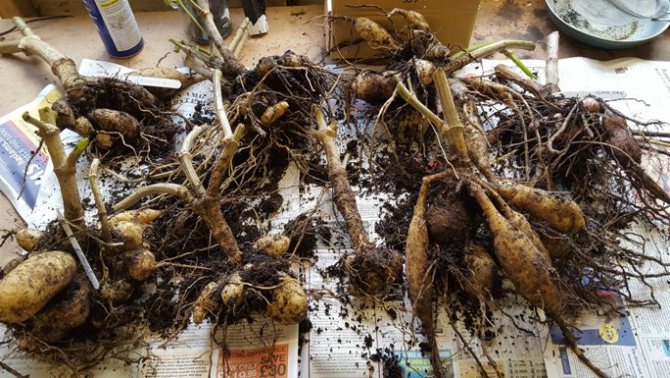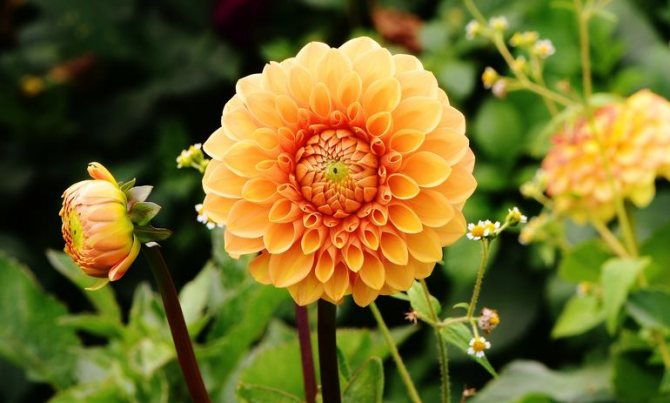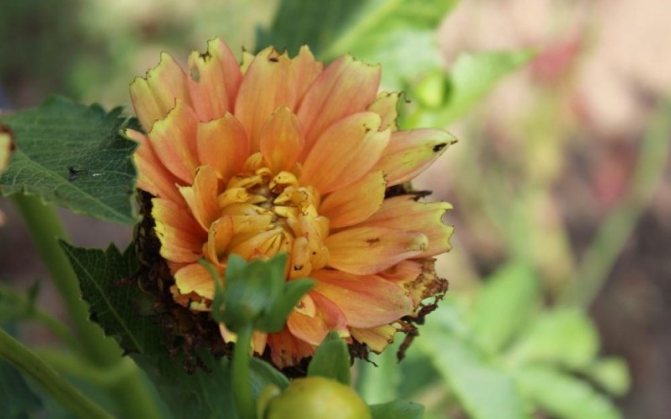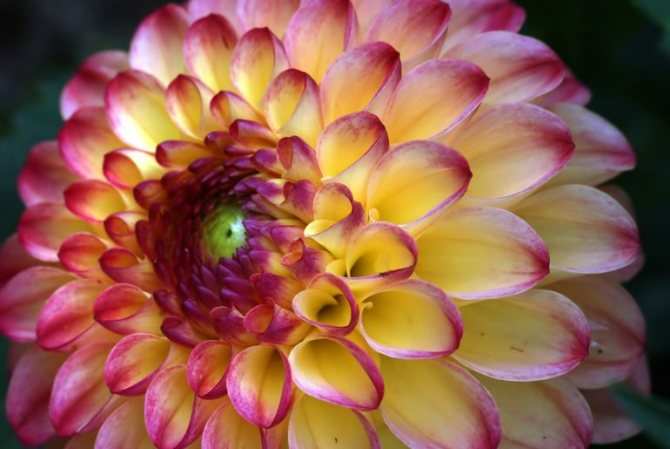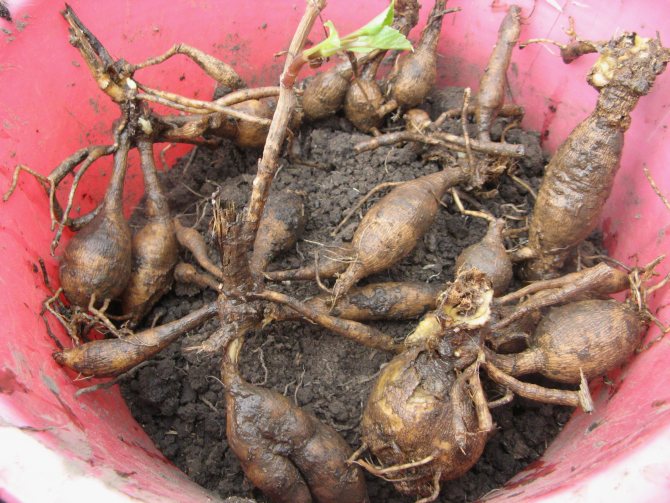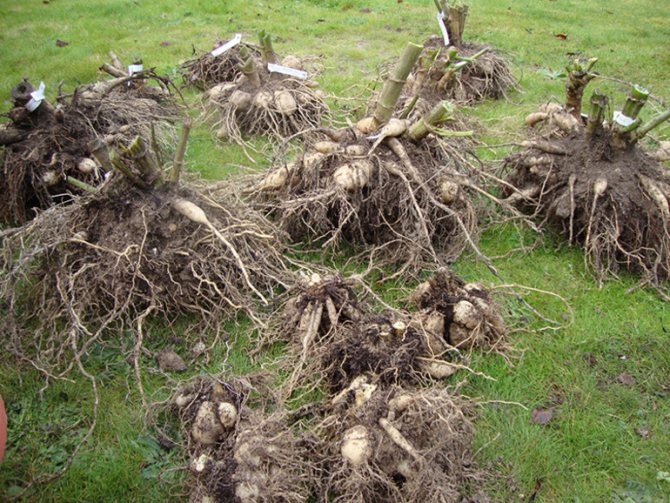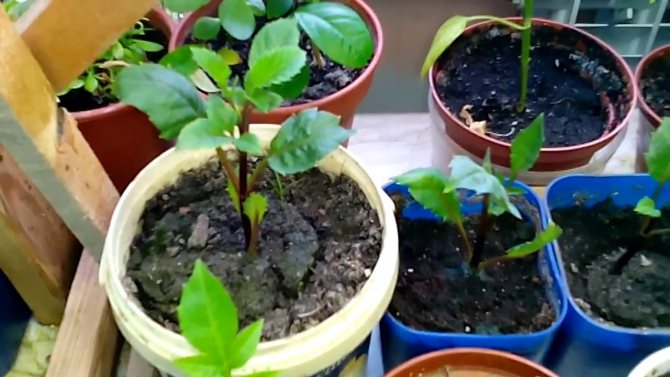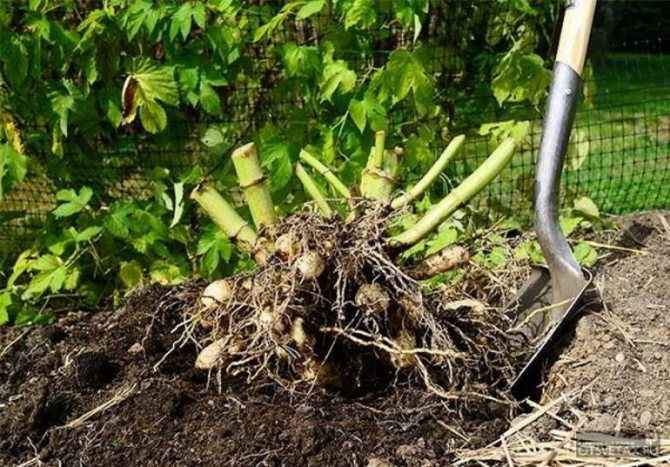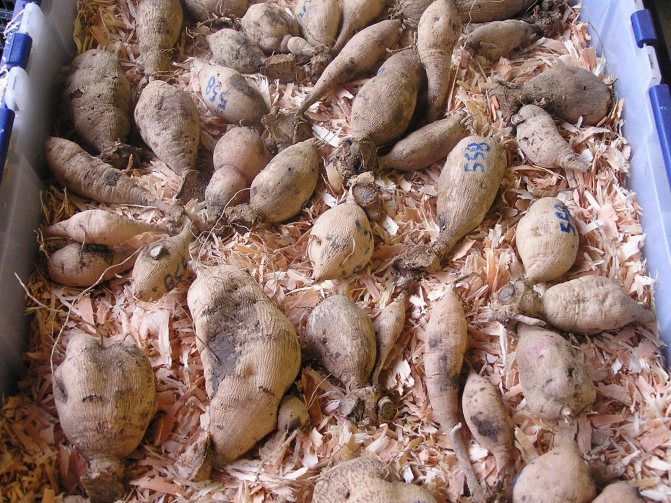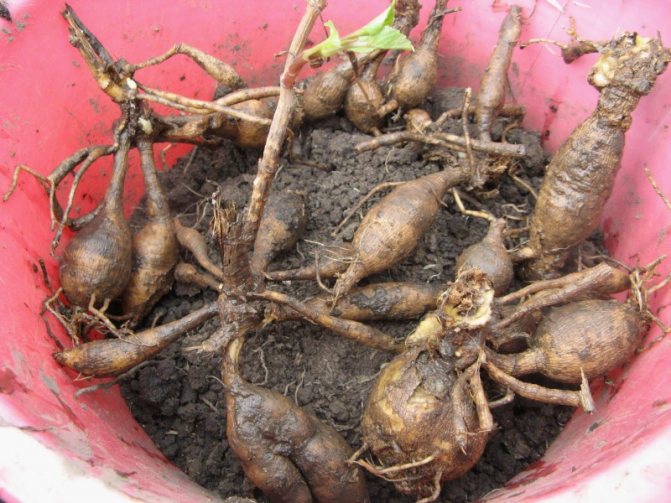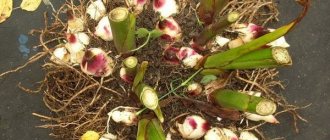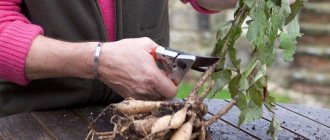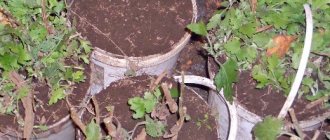Plants »Flowers
0
215
Article rating
Caring for dahlias in the fall includes all the necessary activities to keep them healthy until spring. The peculiarity of preparing for winter is the mandatory digging of the bulbs and laying them for storage, because this flower culture, although perennial, dies in the soil in winter from low temperatures.
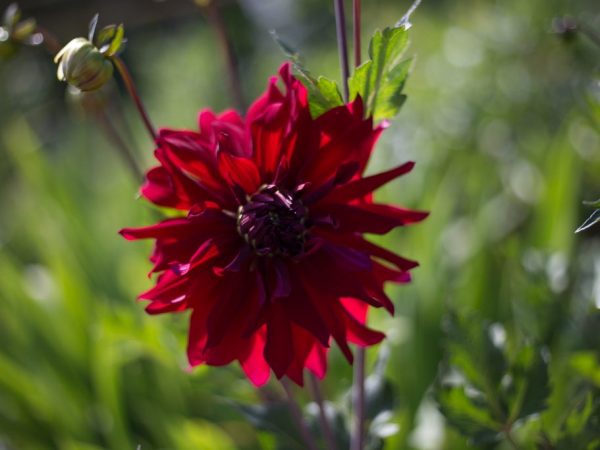
Rules for caring for dahlias in the fall
Dahlia care in autumn
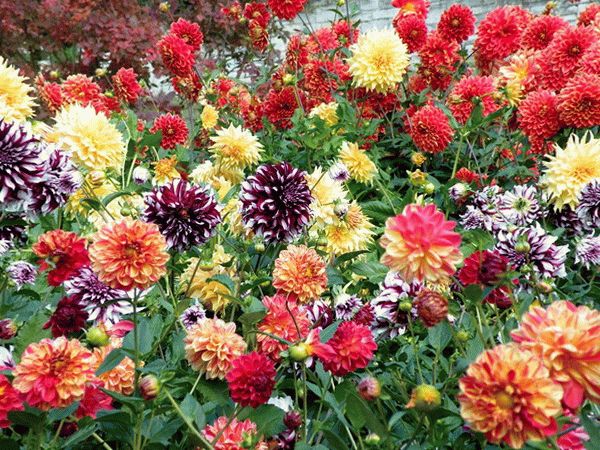

Autumn care for dahlias is:
- in harvesting fallen leaves;
- loosening the earth;
- proper watering.
If you paid due attention to the dahlia flower bed during the summer season, autumn care will make the task easier. The first step is to remove fallen petals, leaves and other debris around the flowers. This is necessary in order to avoid the accumulation of pests that are preparing for wintering and infections. After that, carefully inspect your bushes. Sick and dried flowers need to be dug up and burned. This will prevent the spread of infectious diseases to other flowers. When the dahlia is watered, it stores moisture at the bottom of the stem. This helps him survive the drought. To avoid rotting of the root collar during storage, it is necessary to stop watering two weeks before digging up the roots.
Dahlias reproduce by dividing the roots. You can plant dahlias in spring with seeds, by the fall they will develop good tubers.
In our climate, dahlias are annual flowers if the roots are not dug up and stored properly. Before you start digging, you need to wait for the cold weather, when the leaves on the stems freeze a little. This will harden the flowers and provide immunity.
When to dig in the fall
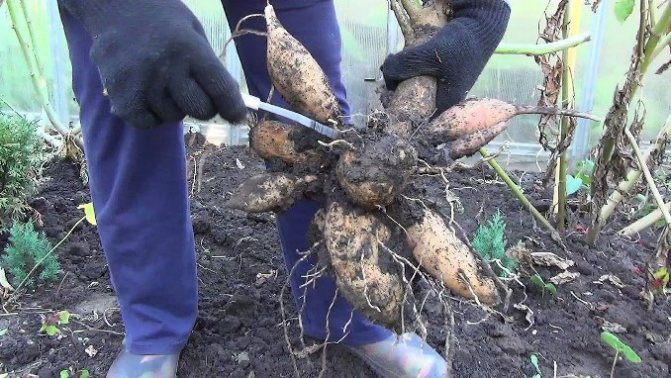

It is advisable to dig up the corms within the recommended time frame. If you get them out of the ground too early, dahlias will suffer storage worse, because in the soil at above-zero temperatures, the optimum temperature and humidity are provided for them. And when the gardener is late in time, the risk is too great that the bulbs will die due to freezing. For this procedure, each region will have its own optimal timing.
In outskirts of Moscow
Tuber formation begins in spring and ends after flowering in mid-autumn. It is such a ripe bulb that is full of strength for a successful wintering. The signal to the fact that it is time to dig up dahlias will be the drying and wilting of their aboveground part.
If the frosts are short-lived, you can let the tuber sit in the ground, slightly huddling the plants. But, of course, one cannot wait for severe frosts. In central Russia, and in particular in the Moscow region, the optimal time for excavation is from early to mid-October. Although weather conditions can make adjustments.
In the Urals
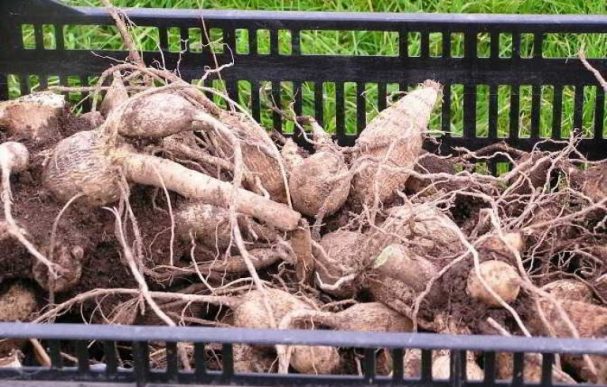

The Ural belongs to the northern regions, although its great length implies the difference in climatic conditions in different regions. Nevertheless, autumn comes here earlier than in the middle lane. With the sudden onset of severe frosts, the roots will begin to rot and the tuber, saving itself, can awaken growth buds.
In this case, it will hardly be possible to save it until spring. If sub-zero temperatures come unexpectedly, you need to have time to dig up the dahlia corms within the next 3 days.General recommendations for the Ural region prescribe to remove the onions from the soil at the end of September, while the weather has not deteriorated much.
In Siberia
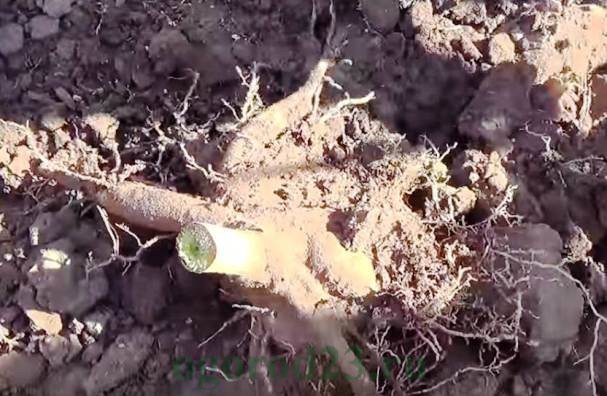

Siberia has a short summer. Here crops with a short growing season are grown. Breeders take this into account when breeding zoned varieties. Dahlias, suitable for cultivation in Siberian climates, fully ripen one month after flowering. The timing of digging also depends on the color of the petals.
Varieties with dark inflorescences are dug out earlier than others. The last ones to be extracted are the specimens that were grown from annual tubers. The vagaries of the weather can affect the timing of the extraction of the bulbs. If autumn is early, the procedure is carried out in mid-September. In persistent warm weather, digging up the bulbs can be postponed for another 1-2 weeks.
In Belarus
Belarus has a continental climate with warm summers and cold winters. In general, it is characterized as soft and moist. On the territory of Mogilev and Minsk regions, weather conditions are comparable to the climate of central Russia. Dahlia bulb digging times will be about the same.
You should only dig up the nodules a little earlier if the autumn is rainy. You need to focus on the weather conditions. In general, we can say that it is necessary to start extracting tubers from the ground in the period from October 1 to 15.
According to the lunar calendar for 2019
Those who adhere to the recommendation of the lunar calendar, in order to dig up the tubers of dahlias, need to meet the following deadlines:
- September - 1-6 (up to 17 hours), 10-19, 23, 24, 26-30;
- October - 1-3, 7, 8, 10-16, 20-23, 25-30.
Proponents of this approach argue that if you work on favorable days, it will be better to keep the bulbs healthy and strong until spring.
Preparation of dahlias for wintering, autumn agricultural technology
The main danger for dahlias in the fall is the onset of frost. Despite the fact that you need to dig them out when the autumn cold weather sets in, a shelter at night will help preserve the tubers of the plant. Cover the dahlias with spunbond at night. If it is not possible to do this every day, you can leave the shelter for a week.
The dahlia bush is wrapped completely with one layer of material. The shelter is not made tightly so as not to damage the flowers.
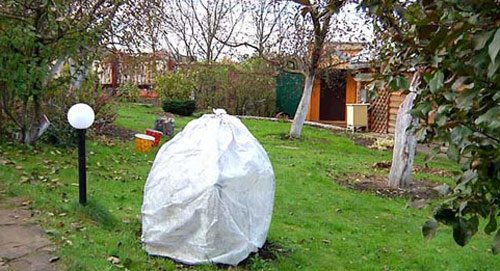

Top dressing plays an important role in the care of dahlias. They are fertilized during the summer at intervals of 10 days. The last feeding is done after the dahlias have faded. Flowers are fed with potassium sulfate - 30 grams per bucket of water.
At the beginning of autumn, the dahlia's leaves are cut off at the bottom of the stem and periodically spud. Tearing off leaves promotes the maturation of tubers, and hilling saves from frost. In advance of digging, dahlias are shed so that the plant is saturated with moisture. Do this two weeks before digging.
What is applicable in care
Nowadays, undersized dahlias grown from seeds are becoming more and more popular. Such annual crops do not need a garter; if desired, you can even grow them at home in a pot. But connoisseurs of tall varieties of this flower should know how to tie up dahlias. This plant looks great against the background of a wrought-iron fence or original stakes-supports. The latter mainly need to be strong and reliable in order to protect the dahlias from breakage in the wind or increase in their own weight. For these purposes, metal structures or specialized flower supports are well suited.
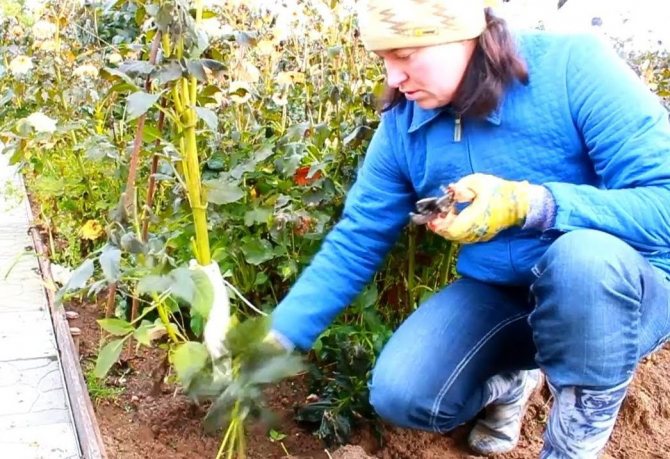

How to care for dahlias in the fall
Dahlias Cheerful Guys - description, planting and care
Many are interested in the question of how to tie up dahlias so that they do not fall. Usually they begin to do this when the height of the stem reaches 60 cm. You can fix the whole bush or each shoot separately. In any case, the longest stem is always tied in two places.
To make a homemade dahlia look neat and well-groomed, it must be trimmed. Moreover, it is better to start the procedure when the shoots have just begun to grow. It is required to leave 3-4 of the strongest shoots, and remove the rest. This will be quite enough for a gorgeous bush. Until it grows to 40 cm, all lateral shoots must also be removed. They unnecessarily thicken the plant and inhibit its flowering.
For a larger number of inflorescences, it is recommended to pinch the main shoot over 4 pair of leaves. Otherwise, the dahlia will use all its strength to form one strong bud with seeds.
Dahlias are susceptible to disease and often suffer from pests. Every gardener needs to have in his arsenal the means to deal with these troubles. If the plant is affected by powdery mildew or viral mosaic, then spots and yellowing will appear on the leaves. Other symptoms include abnormally low growth of the bush, unnatural color of the leaves, and a short peduncle. If such characteristics are found on a flower, the best solution would be to dig it up along with a large clod of earth and burn it. Do the same with tubers if atypical formations are found on them during autumn harvesting. They indicate bacterial cancer.
As for the fight against parasites, then there is no universal remedy.
In case of damage by a slobbering penny or flower beetles, dahlias are sprayed with urea or mullein.
For your information. Infusion of onion or garlic husks, wood ash helps from aphids. Slugs are afraid of a decoction of capsicum, and two-tails that eat buds cannot stand the smell of celandine and wormwood.
Preparing dahlias for storage
An important stage is the preparation of dahlia rhizomes for storage for the winter. If certain conditions are not met, the roots will die and will not give new flowers in the next season. As soon as the dahlias have caught the frost, we begin to dig up the roots. Do not delay this procedure, as new buds may appear, which will weaken the roots. We cut off the stem, leaving 10 cm. If the dahlia is tied to a support, do the pruning without untiing it. Otherwise, the stem may break and be left without buds. Attach a tag with the name of the variety and color to each hemp. It is better to dig with a pitchfork, sticking them deeper and a little further from the roots so as not to damage them. You can do it with your hands. To do this, put on gloves, dig out the ground around, try to hook the roots at the very bottom and pull them out to the surface.
There is an old root in the dahlia root system. Usually he is larger than the others and there is a tuberosity on his body. It must be removed as it is prone to rotting and will not bud in the spring. The roots, which are very thin, must also be cut out, since they will dry out during the winter and there will be no sense from them. Rinse the roots under running water and you will see the real picture - damaged or underdeveloped. These roots must be removed.
Further, the tubers must be divided for spring planting. Remove the uterine root, it is not suitable for further cultivation.
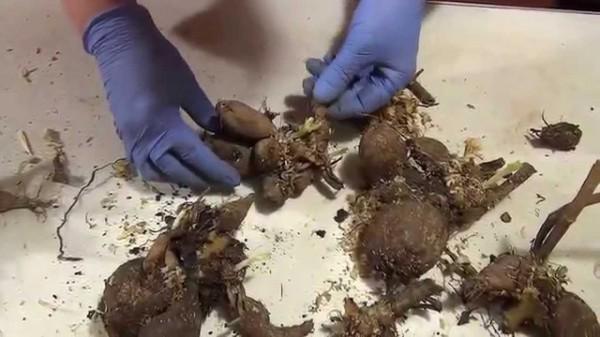

If the roots are not divided, but the whole root head is planted next year, there is no guarantee of good development and the formation of large and lush buds.
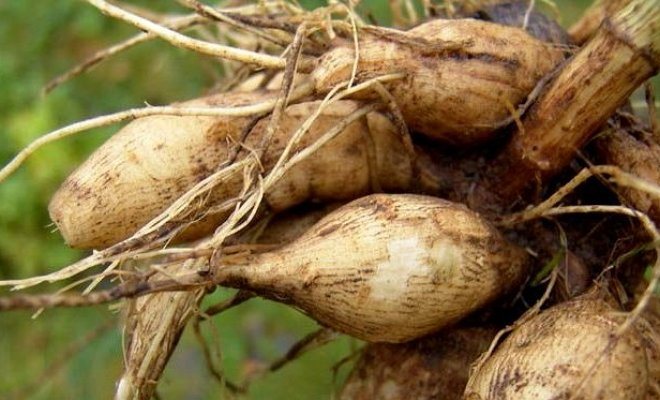

We cut off small roots with disinfected scissors or secateurs.
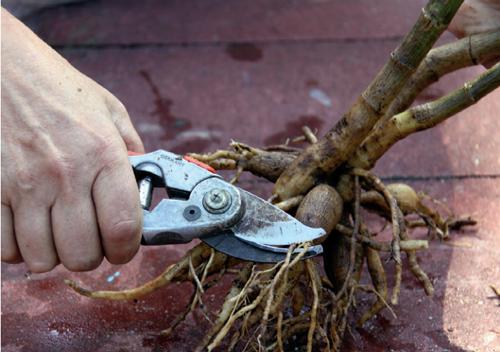

What dahlias grow on my flower beds
Dahlias, I think, are very unpretentious plants. They do not require a special feeding scheme and can easily tolerate short-term drought. But there is one "but" - they are very afraid of the slightest subzero temperatures.
I have both perennial dahlias and annuals, the seedlings of which I plant annually. I usually choose 2-3 new varieties to plan the tiered beds and create a pleasant variety in front of the house.
I really love the seed bags marked "mix", as well as the following varieties:
- "Pompon";
- "Collar";
- Nordviks Gloria;
- "Gudoshnik";
- "Tiger cub".
Note! tall varieties of annual dahlias begin to bloom later than miniature species.
Of the perennial dahlias, I prefer peony, spherical and pompom varieties:
- Downham Royal;
- Rosabela;
- Barbarossa;
- "Ankress".
My annual dahlias are no hassle in the fall. There is no need to dig up and store them in winter. But you need to take care of perennials. Sometimes late flowers are "caught" by the morning frost. He is not yet scary to the tubers, but he already hints at their timely movement into the storage box.
About 1.5 months before digging out the tubers, I begin to gradually prepare for their wintering. It includes several stages.
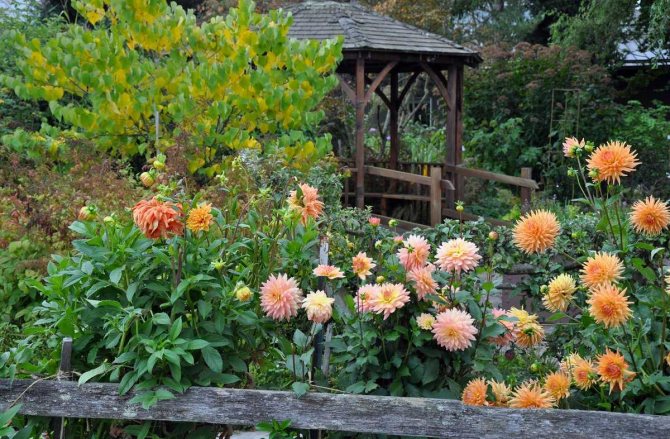

My annual dahlias are not a hassle in the fall, but perennial dahlias need to be taken care of.
How to process dahlia tubers before storage
The processing of dahlia tubers is an important step in their preservation. If the dahlia tubers are healthy and have not undergone an invasion of pests, as well as numerous infections, they will calmly survive the winter under the conditions described below. Before the rhizomes are laid for storage, they are processed. The most effective way is fungicide treatment.


First of all, sort the dahlia tubers into varieties to further create the color scheme in your flower bed. Soak in any solution for 15 minutes. You can process tubers in solutions of Epin, Fitosporin, Topaz. There is a large assortment on sale, we act according to the instructions. A weak manganese solution can be used.


If the roots do not sink to the bottom of a container of water, but float to the surface, they are not suitable for storage.
Next, you need to dry the roots well. Drying should be done on paper or cardboard. Root marking is the next step. Sign each root - variety name and color. You can apply directly to the root and write the name in full, so that in the future you will not be lost in guessing what kind of variety it is. A chemical pencil comes in handy for this.
Alternatively, arrange each variety in containers that you pre-sign. You can attach a piece of plastic with the name of the variety or color to each spine.
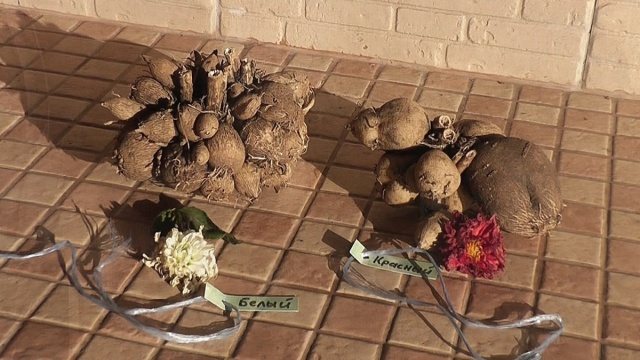

How to dig up and store dahlias in the Urals?
You can start working in the Urals in October. For this it is worth choosing a dry day. First of all, you need to cut off the stems, then remove the earthen lump with a pitchfork. The tuber must be cleaned of dirt and rinsed with water. It is best to treat the plants with a solution of potassium permanganate.
The seedlings should stand in the solution for at least 30 minutes. Then they need to be taken out and dried. It will take at least 10 days to dry.
Each region has its own storage characteristics. Florists of the Urals most often use paraffin for storage. So the tubers are perfectly preserved and are ready for planting in the spring.
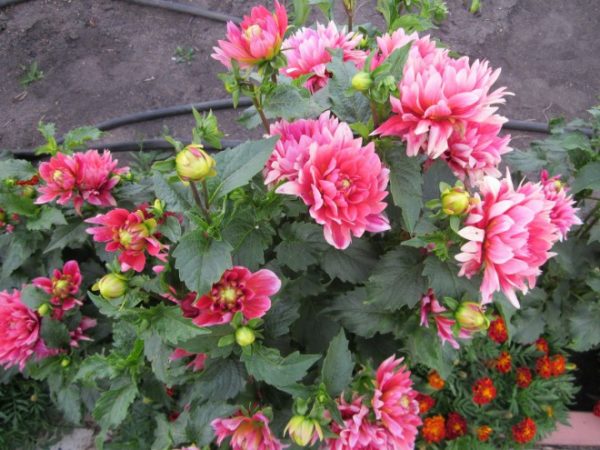

How to save dahlia tubers: at home
Each gardener has his own secrets for storing dahlia tubers. It all depends on when you dig up the tubers. The best weather conditions for digging them up are air temperatures from zero to three degrees below zero. Having cleared them from the ground and processed by the methods described above, they are then put into storage in boxes and stored at a temperature of plus 7 degrees. Permissible deviations are plus or minus one degree. The humidity of the ambient air should be between 60 and 80 percent. Dahlia roots can be stored in different ways. For example, they are coated with paraffin. To do this, the paraffin is melted in a steam bath and the roots are dipped in it.
Then the tubers are placed in a box and stored there until April at a temperature of 10 to 14 degrees Celsius.
The main task when storing dahlia roots is to provide them with conditions under which their germination will be impossible.
Another way to preserve the roots in winter is in a film or in a plastic bag.To do this, buy peat at the store, put it in a bag or film and wrap it. The main advantage of this method is that the roots do not touch each other. The condition of the roots is very easy to check.
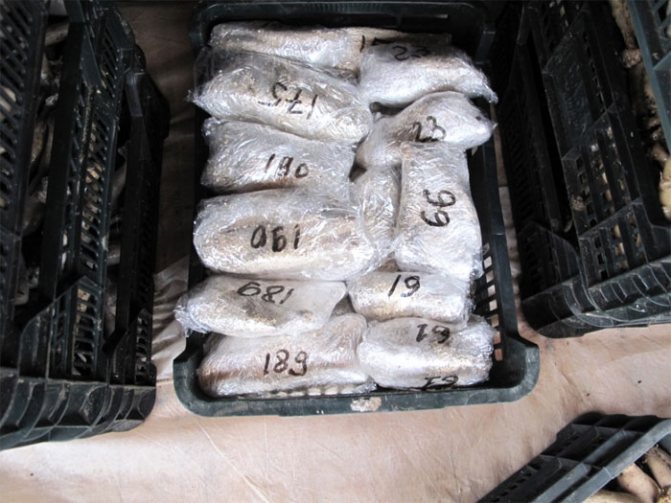

Clay chatter is not a bad way to preserve tubers. First, we treat the dahlias with fungicides (recommendations above). We dilute the clay with water to the consistency of sour cream. We lower the roots into it, and then let it dry and send it for storage.
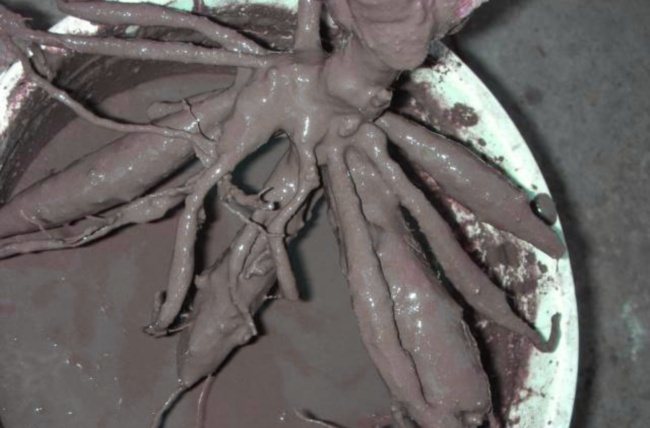

If you don't have a lot of dahlia roots, you can store them in the refrigerator.
Work procedure step by step
It is advisable to dig dahlias in autumn in dry weather. From the tools it is necessary to prepare a pitchfork, a small scoop, a pruner, a knife, disinfectants (solution of potassium permanganate or phytosporin, charcoal powder).
- The tops of the flower are cut with a pruner at a height of 30 cm from the ground so that the foliage does not interfere with the work.
- Carefully dig the bush with a pitchfork in a circle, retreating from the stems at least 30 cm. The larger the dahlia bush, the more voluminous its root system will be.
The tubers are dipped for 40 minutes in a solution of phytosporin or potassium permanganate. This procedure will free the tuber from pathogens and fungi. After drying (stem down!), The cuts on the roots are sprinkled with charcoal or covered with greenery.
Dahlias treated in this way are ready for wintering. Most often, the rhizomes are stored in the cellar, wrapped in several layers of newspaper or in boxes with sand, peat or sawdust, observing the air humidity of at least 60%. The storage temperature of the dahlia planting material is +4 .. + 9 degrees. The temperature must not be allowed to drop to zero marks and increase more than 10 degrees Celsius.
If the grower does not have the opportunity to place the dahlia tubers in a special storage facility, you can keep the plants at home. For this, the tubers must be prepared.
A useful video lesson from the Sadovy Mir channel: when to dig dahlias in the fall and how to do it correctly:
in the cellar
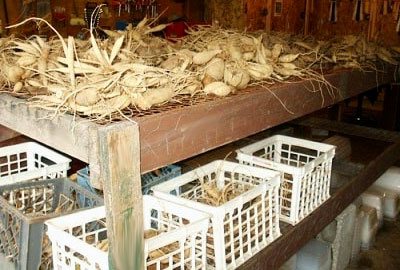

The cellar is an ideal place for storing dahlia roots, as the temperature there corresponds to the conditions under which the roots will not germinate. Prepared rhizomes are laid out in boxes or on shelves, if space permits. Can be sprinkled with coniferous sawdust. It is better to lay out no more than two rows in boxes. In the conditions of the cellar, constant inspection of the roots is necessary, since rodents can damage them. We discard such roots immediately. We also observe whether our rhizomes have rotted.
Choosing a place for growing dahlias
Dahlias (the scientific name for dahlias) are not very capricious, however, they love warmth, need protection from gusts of wind and do not bloom in the shade. Choose a sunny area that is enclosed by a wall, fence or dense hedgerow on the north side. Partial shade is acceptable - the space under the sparse crown of trees. It is important that there is enough space and fresh air around.
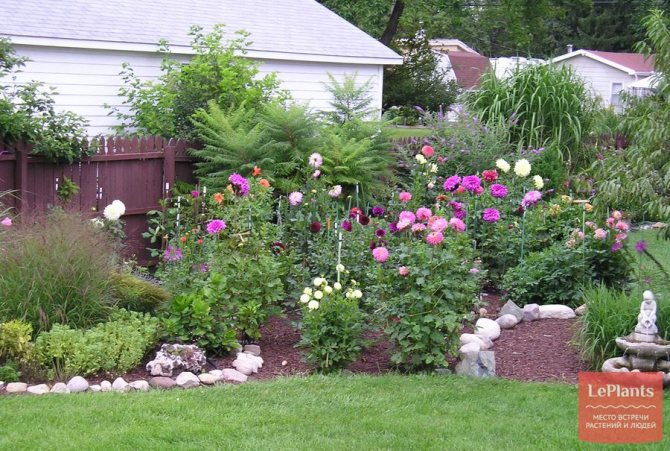

ON THE PICTURE: When choosing a place for dahlias, it is better if a fence or wall is located on the north side of it.
Dahlias should not be planted in lowlands. Cold air accumulates there, which can destroy plants!
Growing dahlias is possible on fertile, permeable soils with good structure. Groundwater should not come out to the surface closer than 60-70 cm... The slightest stagnation leads to rotting of the root tubers. It will not be possible to grow planting material for next year in such conditions.
The low permeability of the soil can be improved by adding:
- coarse river sand;
- fine gravel;
- coal slag (not suitable if the soil on the site has a neutral or alkaline pH reaction).
The structure of the soil is improved by the introduction of organic matter!
When dahlias are planted, the acid-base (pH) reaction of the soil is checked. It should be neutral, at least slightly acidic. Acidic soil is neutralized with slaked lime at the rate of: 100 grams not medium acid and 150 grams on very acidic soils per 1 sq. meter... An indicator of a strongly acidic soil will be water standing for a long time in the spring in the area, mosses and horsetails in the vegetation cover. Strongly alkaline soils are alkalized by the introduction of peat. However, this procedure will have to be carried out annually, and even in this case, dahlias will grow poorly.
When forming tubers, plants consume a large amount of nutrients from the soil, making it impoverished. Planting dahlias in the same place for the second year is not recommended.
Dahlia are close relatives of asters. They consume the same substances from the soil and suffer the same diseases. Therefore, it is not recommended to plant them after each other.
The plot of land chosen for dahlias is prepared in advance. During the autumn digging, from three to five kilograms per square meter of humus or compost are applied. In the spring, mature compost is mixed with wood ash, scattered over the entire plot and shallowly loosened the top layer of the earth with a rake.
in sand
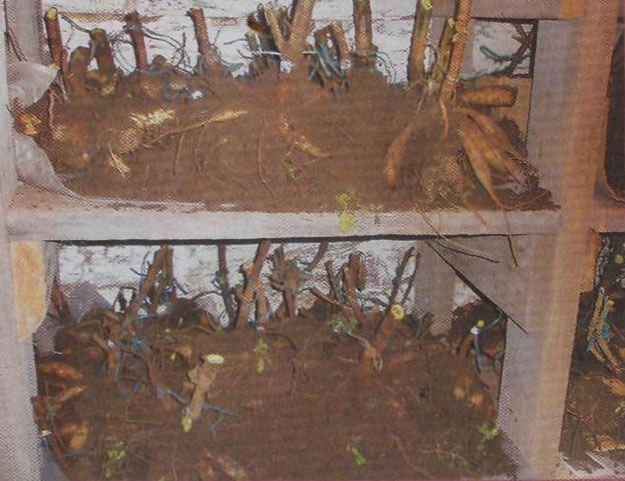

Storing dahlia roots in sand is similar to storing in sawdust. Before laying the rhizomes, the sand must be calcined to avoid infection of the roots with infection. The layout should be the same as in sawdust, i.e., the roots do not touch each other, in order to avoid infection with rot. We stand at a temperature of plus seven degrees and a humidity of 60 percent.
Testimonials
Olga, 53 years old: “I only recently learned how to store dahlias. I think the best way is to use paraffin. Plants lie perfectly, nothing threatens them. By spring the seedlings are ready for planting. "
Vera, 44 years old: “I put boxes of dahlias in the cellar. I was very glad that all the flowers were safe and sound. This storage method is the most optimal for me. "
Dahlias are a decoration of any flower bed. In order for the seedlings to be healthy, it is necessary to properly store the tubers in winter. There are a lot of ways, you can easily choose the best option.
Why are dahlia tubers stored with their root collar down?
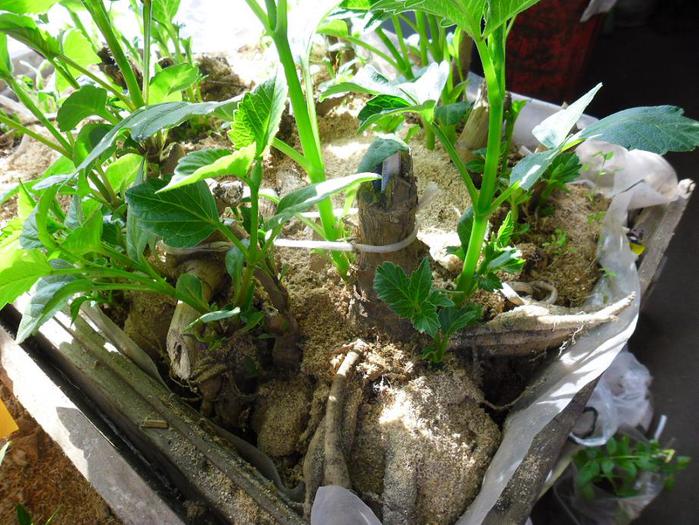

The root collar plays an important role in the growth and development of any plant, as new buds can form on it. Experienced gardeners advise storing the dahlia tubers with the root collar down to remove excess moisture, this will prevent the tubers from rotting. In dahlias, when the roots are kept at a sufficiently low temperature, the buds are dormant. In spring, when rhizomes germinate in pots or when planted in open ground, the root collar should not be buried, new shoots will go from it. You can, of course, plant a tuber without a stem, but then the germination process will be increased.
Dahlias, like other flowers, need proper care and storage. Armed with knowledge and based on your own experience, you can achieve unsurpassed results.
Recommendations
To get well-ripened, ready-to-store dahlia tubers, a number of conditions must be observed:
- plant flowers in sunny, dry areas;
- do not overfeed plants with fertilizers in the second half of summer, especially manure;
- plant dahlias on slightly acidic or neutral soils.
When digging up, it is important to proceed with caution, being careful not to cut or break off pieces of the root. Each wound on a tuber increases the risk of rot during storage.
It is recommended to divide a large dahlia rhizome before laying it for storage, and not in spring. Too large a tuber root is more difficult to maintain than a cut.
Today we looked at when to dig up dahlias in the fall and how to store them. We hope this information will be useful to you. Bright flower beds!
Regardless of the variety, dahlias look luxurious and majestic flowers. Thanks to selection, their inflorescences can be of unusual shapes and very different colors. To preserve this plant for cultivation, it is required to observe its agricultural technology.Dahlias must be dug out of open ground in the fall. Let's talk about how to do it right and why.
Pruning
After the tubers are washed, damage and rot are clearly visible on them, so the infected specimens can be removed. If rust or rot has only slightly damaged the fabric, the problem areas are carefully trimmed, and the cuts are sprinkled thickly with wood ash or lime.
Then comes the turn of trimming unnecessary roots. First of all, old root shoots are cut to the base - they do not give growth buds, but they quickly become infected during storage. They are larger and darker than all the others, so finding them is not difficult.
The next to cut are long roots and those that are thinner than 1 cm in diameter.They are shortened to a length of 12 cm.
Molten wax method


In a warm paraffin melted in a steam bath, a tuber prepared in advance is dipped in a quick motion. In order not to cook the rhizome, it is immersed for only a few seconds. After the formation of a thin crust, the root is unrolled with the other end and the procedure is repeated. After processing, the roots are placed in a container with sawdust; for this purpose, a plastic bag is better suited. Keep the bag tied.
The care and diligence invested in the correct preparation for the winter of planting material will pay off handsomely in the next gardening season, when lush dahlia bushes will be covered with beautiful buds on the garden plot and will delight the eye and heart with a long flowering.
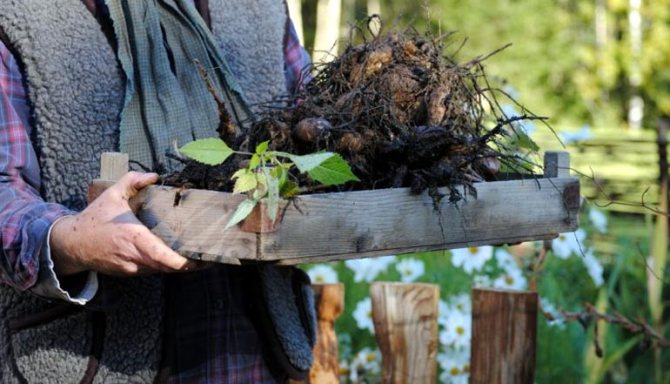

Dahlia is a wonderful plant often grown in the garden and ideal for cut flowers. She pleases us with a huge variety of beautiful flowers of various shapes, sizes and a wide range of colors. Planted in a sunny location, it blooms profusely from mid-summer until the first fall frost. When to dig up and how to store dahlia tubers in winter at home, in the basement (cellar) after digging - this will be discussed in this article.
Dahlias belong to the Asteraceae family, come from the warm climate of Central America - from Mexico, Guatemala. These perennials freeze and die in our climatic conditions, therefore they are grown as annuals. Due to their sensitivity to frost, they need to be dug up for the winter.
Varieties of dahlias
The plant was brought to Europe from Mexico at the end of the 18th century, and received its name only in 1803. Botanist K. Wildenau named it after the Russian biologist, geographer, ethnographer and academician I. Georgi. Currently, 13 species and about 15 thousand varieties of flowers are known. The most popular ones are:
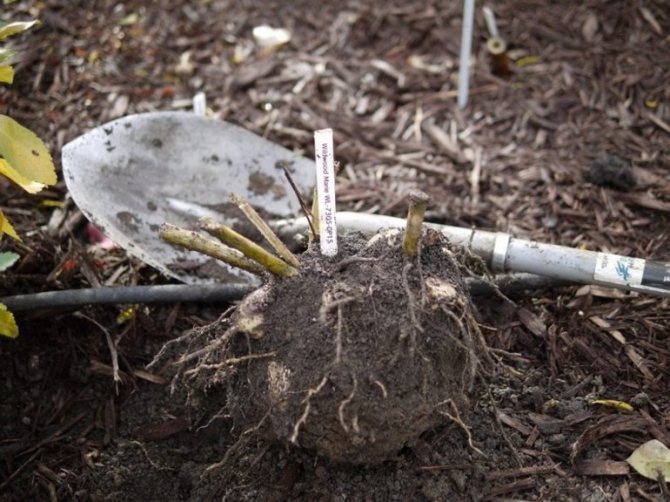

- Simple dahlia. A short bush with flowers up to 10 cm in diameter, the petals are arranged around the core in one row. The color ranges from yellow to orange-red.
- Collar. A large shrub with large flowers, reaching 1 m 20 cm in height. It has two different rows of petals.
- Peony. It has huge buds, which, after opening, form a circle with a diameter of 12-15 cm.
- Anemonic. Differs in lush flowers, not exceeding 10 cm in diameter.
- Decorative. The size of its head varies from 9 to 25 cm, the color is yellow, orange and purple.
- Globular. It has round flowers of yellow, peach and reddish hues.
- Cactus. Plant with pointed marginal petals of pink and reddish color and large buds, reaching 24 cm in diameter when opened.
- Semi-cactus. Inflorescences range from 9 to 25 cm and are located on a high bush. The marginal petals are tucked from the middle to the tips.
- Pompom. A lavender or light purple flower with a rounded shape and a small head size.
- Nymphaean. The shape of a flower bud resembles a light pink, lilac or snow-white lily growing in water.
- Mixed types. The most diverse subgroup of plants, including varieties that do not fit the description to any of the groups listed.
Despite the existing abundance of plants, breeders have long been trying to solve a difficult problem and get a blue dahlia, which so far remains only a dream. Also, the problem of whether it is necessary to dig dahlias for the winter and whether it is necessary to preserve the tubers has not been solved.
Additional processing
In preparation for winter, additional processing is carried out at will, but most gardeners try to perform it, since this will help to preserve the maximum possible amount of planting material without loss until spring and facilitate winter care.
You can choose one of these ways:
- Waxing... In a water bath, paraffin or paraffin candles are melted to a semi-liquid state. Root shoots are dipped in them and taken out immediately. The paraffin layer hardens in a few seconds. In the spring, before planting, this layer must be carefully removed.
- Protein treatment... To do this, beat the egg white until foam appears and apply with a culinary brush to the rhizome. After the layer has dried, the application is repeated three to four more times.
Both methods are aimed at creating a layer that will prevent moisture loss in winter and isolate the plant from pathogenic bacteria.
They also carry out treatment with disinfectants, which are designed to prepare perennials for laying for winter storage. Most often, the well-proven drugs "Maxim" and "Hom" are used. Their solution is prepared in a small volume of water, where the dahlias are then lowered for 15-20 minutes, and then dried so that there is no moisture left on the surface.
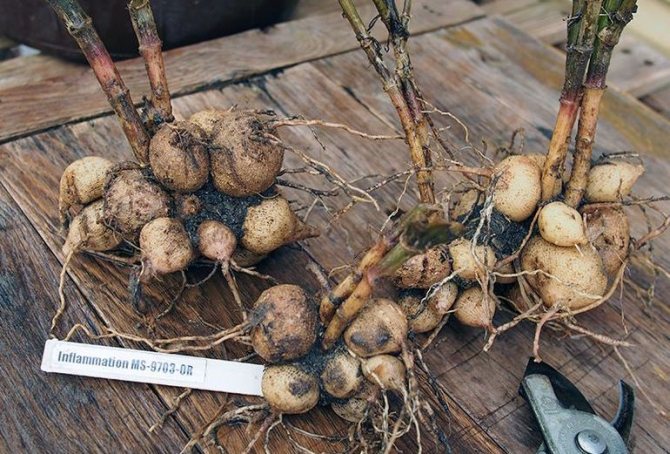

Drying tubers
If you do decide to rinse the tubers, then it would be appropriate to disinfect them. For example, in a solution of potassium permanganate. Well, after these procedures, the rhizomes should be thoroughly dried. To do this, they need to be transferred to a well-ventilated cool room. You can also dry tubers outdoors, but only in dry and sunny weather.
It is impossible to dry the planting material in the warmth, as too much moisture will evaporate from it. As a result, the tubers will dry out and will not be able to germinate in the spring. In the process of drying, the tubers must be laid with the stems down. So, excess water will evaporate from them. After about a week, cut off the small roots and shorten the stems to 3 cm.
Growing features
Dahlia is a thermophilic culture, especially poorly tolerated by its root system. If you leave the plant in the ground, then it will die from frost, so the flower must necessarily overwinter indoors. It remains to figure out how to dig up dahlias for the winter and where the plant can most reliably wait out the cold.
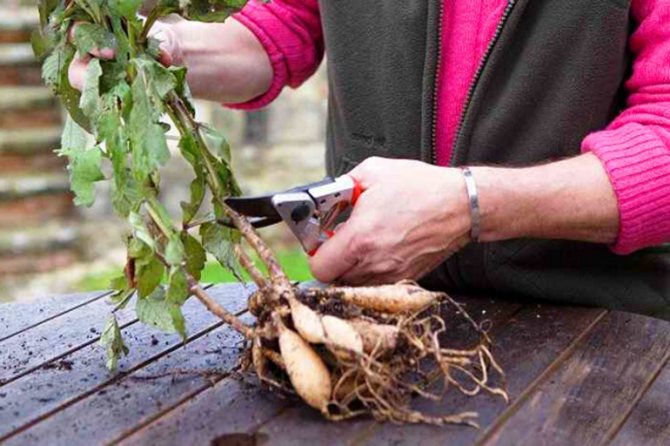

Dahlia is rightfully called one of the brightest and most beautiful flowers in the garden. It has a long flowering period, which is a huge advantage of the plant. Dahlia begins to bloom in mid-July and continues to delight its owners until the first night autumn frosts.
Division
In the fall, after harvesting, the material is also divided, since it is more difficult to cut them in the spring.
The main rule of division: on each division there should be a fragment of the neck, from where new shoots will appear in the spring.
The smallest tubers are not divided. After separation, it is advisable to sign the material so as not to confuse different varieties with each other. Then they disinfect with a weak solution of potassium permanganate, dipping dahlias into it for half an hour.
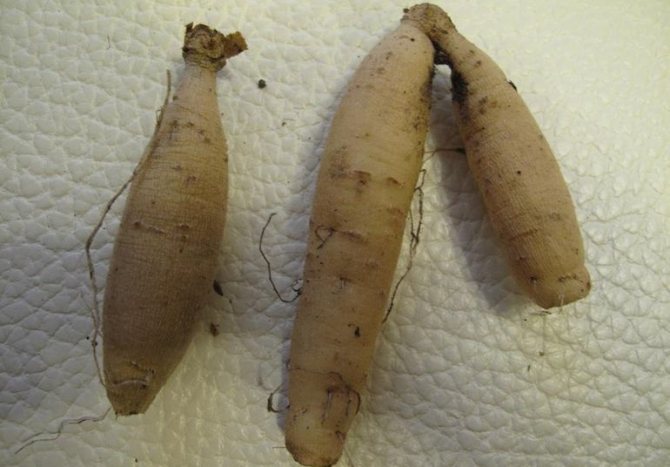

Storage begins with digging.
Autumn is approaching. We have already admired the lush flowering of dahlias, it's time to think about their storage.
Theater starts with a coat rack, and storage dahlia
- from their digging. There is no need to rush into this. But pulling too much too. The ideal moment is right after a severe frost.
Weak frosts damage only the blossoming flowers and, if warm weather re-establishes, flowering will resume.
Strong frost - destroys most of the leaves.
Plant extraction rules
In the fall, after the first night frosts, when the dahlia flower looks drooping and darkened, it is time to remove the rhizomes from the ground. The first step is to select weak, sick or ugly specimens and remove them. Then, the diseased seed should be burned along with the soil to prevent contamination of other plants.
When digging a flower out of the ground with a shovel, proceed with caution, taking into account the size of the root. You can determine it by the size of the bush. The more magnificent it is, the larger the root system. Some gardeners find it more acceptable to use a rake for this job, as it makes it easier to preserve the tubers. The darkened stems are cut at a distance of about 20 cm.
First, the procedure is to dig a bush around, after that you should pry the plant with a shovel or rake from below and, being careful, pull it out of the ground. In no case should you drag the plant by the tops. This can lead to root damage in the neck area and further rotting of the tuber.
After digging up the plant, be sure to lightly shake off the ground. The tubers must be allowed to dry out by leaving them in the garden in the fresh air. Later, the dahlia is thoroughly washed with running water while shortening the stems by 10 cm.Stuck lumps of earth can lead to the development of viral diseases and rotting of the planting material.
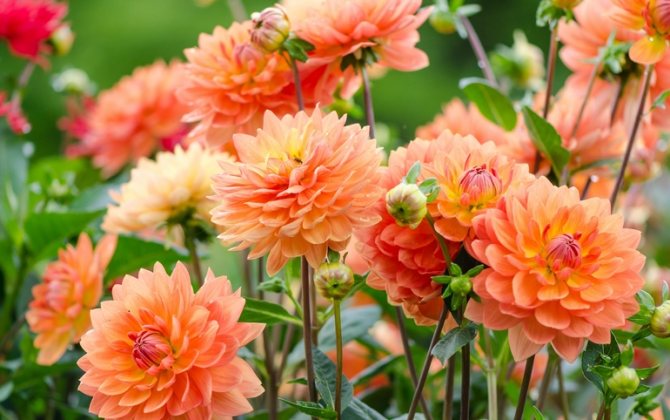

For processing, the rhizome is placed in a container with a disinfectant solution for half an hour. The drug Maxim is best suited for this. Then dahlias are left to dry in a well-blown, shaded place.
What happens after wintering?
As spring approaches, gardeners begin to think about what to do next with tubers, and how to "reanimate" them. If the bulbs have survived the winter well and are in perfect condition, then there are no problems: they are quite ready for awakening and planting, and will soon sprout quickly and give color. But more often it happens that it is not possible to preserve the tubers in their original form, and numerous drying of the roots is noted. In such cases, the bulbs are carefully examined, and if they have not completely dried out, but only wilted, then they begin urgent rehabilitation.
To do this, take a small container, fill it with a nutrient mixture, peat or large sawdust. Then the wilted tuber is placed in the filler in a horizontal position, trying not to deeply deepen.
It is necessary to ensure that so that the root collar is completely open. Further, according to the instructions, they are bred preparations "Epin-Extra" or "Zircon", and generously spray the planting. The container is installed on the windowsill and provides the plant with bright, but at the same time, diffused light. To do this, use a sheet of loose paper glued to the glass with scotch tape, as well as gauze or a tulle curtain.
This procedure is performed at the beginning of March, so that the plant has time to recover from wilting and wake up.
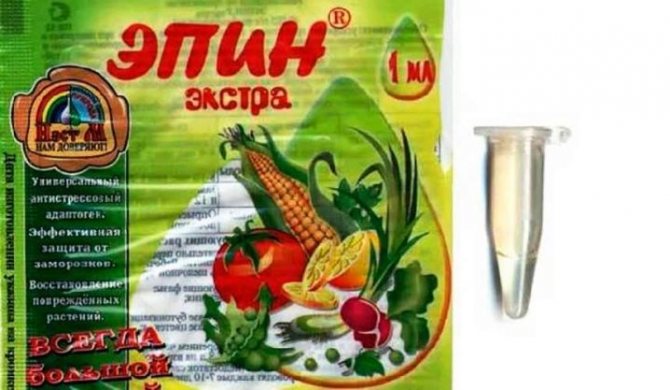

If damage to the bulbs was noticed on time, and measures to save them were taken correctly and quickly, then after 3-4 weeks you can wait for the first shoots to appear. During this time, it is necessary to monitor the condition of the filler, not to allow it to dry out or excessive moisture. The latter will quickly lead the weakened tuber to rotting, and then it will definitely not be possible to save it. After the plant has come to life, it is provided with good lighting and moderate watering. Top dressing at this stage is prohibited.
If the tubers have survived the winter well, then another method can be used to awaken them. It is well suited in cases where there is no way to get the filler, but it is already necessary to awaken the plants from hibernation. To do this, take an ordinary transparent plastic bag, and place the tuber in it. Then a solution of any growth stimulant is prepared, and the dahlia is sprayed.Next, the bag is slightly tied and a small hole is left for air circulation, after which it is placed in a warm and well-lit place. In this case, the light can no longer be scattered, since the polyethylene will do it on its own.
As the moisture from the bag evaporates, the onion is sprayed and awaited for its awakening.
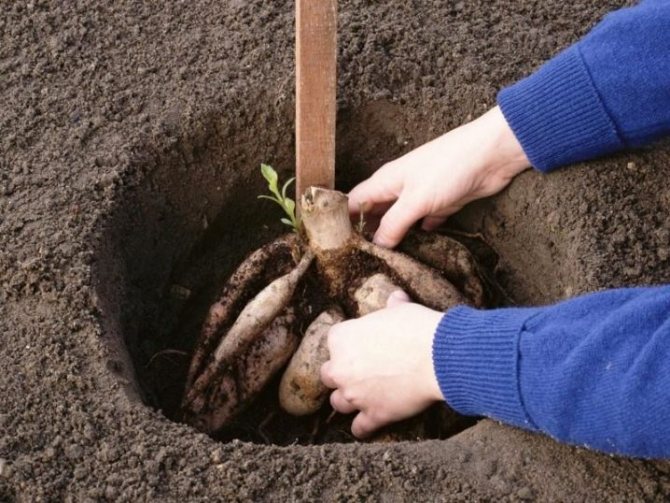

The dahlia wakes up pretty quickly, and after a month the first strong shoots appear. After they reach a length of 5 cm, the bulbs are planted in a flower bed, and if it is still quite cold outside and the earth has not warmed up above +10 degrees, then they are planted in pots and kept in the apartment for some time.
When dahlias are planted in open ground, they must be spilled, and in the event of a threat of recurrent frosts, they are covered from above with any non-woven material, for example, agrospan or lutrasil. After the threat of nighttime temperature drops has passed, the plants cease to cover and are transferred to the usual summer mode of care.
Read also: Rose of Desiree - Encyclopedia of Roses
For information on when to dig dahlias in the fall and how to store them in the winter, see the next video.
Dahlia is a wonderful plant often grown in the garden and ideal for cut flowers. She pleases us with a huge variety of beautiful flowers of various shapes, sizes and a wide range of colors. Planted in a sunny location, it blooms profusely from mid-summer to the first fall frost. When to dig up and how to store dahlia tubers in winter at home, in the basement (cellar) after digging - this will be discussed in this article.
Dahlias belong to the Asteraceae family, come from the warm climate of Central America - from Mexico, Guatemala. These perennial plants freeze and die in our climatic conditions, therefore they are grown as annuals. Due to their sensitivity to frost, they need to be dug up for the winter.
Winter storage rules
Care during the winter months is minimal, but it also requires certain rules to be followed.
Tank preparation
Before storing dahlias, it is necessary to prepare the containers in which they will be stored. These can be wooden crates or cardboard boxes with newsprint at the bottom. A layer of sand, sawdust, dried peat or vermiculite is laid out on paper. Tubers are placed on top in one layer. It is advisable that they do not touch each other: this will protect them from emerging diseases, even if one specimen is already affected.
Sprinkle the roots on top with slaked lime or the "Fito Plus" preparation for storing the crop. The empty space between the rhizomes is filled with the same material that was decomposed below (vermiculite, peat, sawdust, etc.).
Choosing a storage location
An ideal storage room for dahlias is a basement with a temperature of 3-7 ° C. The main parameter important in care is air humidity. It should not be low and be in the range of 60-80%. It is this moisture that will not allow dahlias to dry quickly.
Another important parameter is good ventilation. If the basement is not equipped with adequate ventilation, then it should be ventilated frequently, at least twice a week. You can periodically turn on a regular fan, which will force the air to move inside the room.
Not everyone has a suitable basement at their disposal, so many gardeners are forced to store flowers in a house or apartment. It is necessary to choose a place where the temperature will not rise above 15 ° C throughout the winter. It is necessary that there are no radiators nearby that dry the air and can raise the temperature to a critical level. Unheated corridors and verandas are good for this.
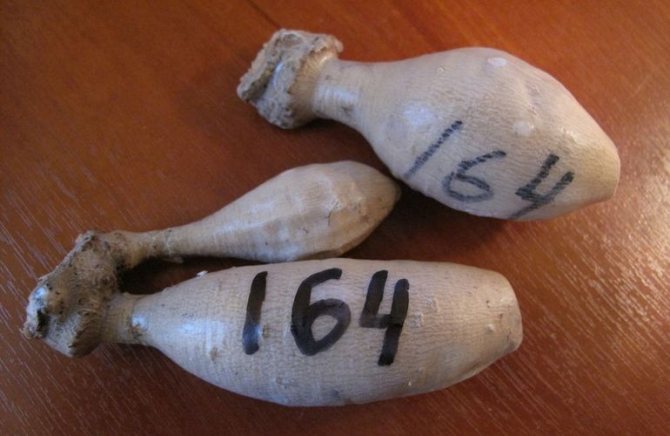

Care during storage
Having put the tubers for the winter, they must not be forgotten. Every rhizome should be examined once or twice a month to detect rot and fungal infection.If such places are found, they are cut out with a knife disinfected in a solution of potassium permanganate to healthy tissue and sprinkled with crushed charcoal. After this, the substrate is necessarily replaced with a new one, since microbes-pathogens of the disease may remain in it.
If it is found that dahlias are dry and their surface is slightly wrinkled, this does not mean that the planting material is ruined. The substrate is moistened with a spray bottle to make it slightly damp. This procedure will restore density and normal turgor to the roots.
It may seem that autumn care and care in the winter months is too troublesome, but the flowering of dahlias, which came next year, will be a worthy reward for all the efforts.
Drying
In the presence of dry weather, drying can be carried out outdoors, but most often the option is chosen indoors. The dug tubers are placed with the stems cut down so that water and juice can freely drip from them. The ideal temperature for drying is between 8-10 ° C. The decision to dry in the house will lead to drying out and death of the planting material.
Drying lasts about 10 days, provided there is good ventilation or frequent ventilation of the room. Then the stems are additionally shortened, leaving hemp about 3 cm.
What happens if you don't dig up the tubers?
Novice gardeners often wonder whether it is necessary to dig up tubers for the winter, and whether this painstaking procedure can be avoided. Unfortunately, in most regions of our country, winters are very cold, and already in November there are severe frosts.
Therefore, if dahlias are planned to be grown as a perennial plant, then the autumn digging of tubers is mandatory. If the flowers grow like annuals, then you can not bother and leave the tubers in the ground. This method of growing flowers can be used by people who do not have a basement, garage or other place where the desired temperature and humidity regime could be maintained during the winter.
